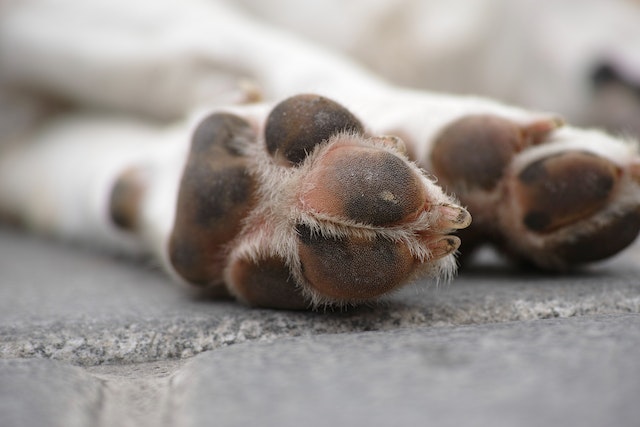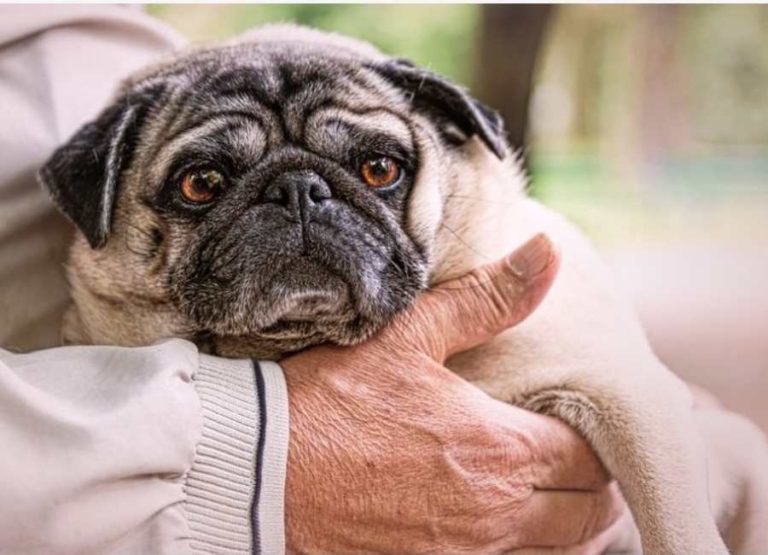How to Treat a Broken Dog Nail [A Step By Step Guide]
![How to Treat a Broken Dog Nail [A Step By Step Guide] How to Treat a Broken Dog Nail](https://petcreeks.com/wp-content/uploads/2023/09/igor-bumba-V9JMh9A-10E-unsplash.jpg)
Let’s discuss how to treat a broken dog nail…
We all know accidents happen, and one mishap that can leave our furry friends in discomfort is a broken dog nail. But fear not!
In this quick and easy guide, we’ll walk you through the steps to treat a broken nail, so you can get your pup back on their paws in no time.
Signs of a Broken Dog Nail
Signs of a broken dog nail can include limping or favoring the affected paw, excessive licking or chewing at the nail, swelling or redness around the nail bed, and visible signs of a cracked or split nail.
Dogs may also show signs of pain or sensitivity when the broken nail is touched or manipulated. It is important to seek veterinary attention if a broken nail is suspected, as further complications or infections can occur if left untreated.
How to Treat a Broken Dog Nail
Treating a broken dog nail requires immediate attention. Start by gently examining the nail and assessing the severity of the break. If it’s a minor crack, you can apply an antiseptic solution and use a dog-friendly nail file to smooth the edges.
For more serious breaks, it’s best to consult a veterinarian who can determine the appropriate treatment, which may involve trimming the nail or applying a protective bandage. Remember to monitor your dog for signs of pain or infection throughout the healing process.
Let’s dive deeper…
The following are some tips on how to treat a broken dog nail:
Step 1: Restrain your dog
The first step is to safely restrain your dog to prevent them from moving around too much during the treatment. You can use a leash or have someone hold them gently but firmly.
Step 2: Assess the Situation
Picture this: You and your four-legged buddy are out for a walk, and suddenly, you hear a little yelp of discomfort. You look down and notice that your dog’s nail is broken.
The first thing to do is sit down with your furry friend, taking care not to startle or stress them further. Gently hold their paw, and with a calming voice, let them know that you’re here to help.
Now, closely inspect the broken nail. Is it just a small chip, or is it a significant break? Is there any bleeding? If it’s a clean break without bleeding, you’re in a better position. But if there’s bleeding, it’s essential to move on to the next step swiftly.
Step 3: Gather Supplies
Being prepared is half the battle. So, let’s gather the supplies you’ll need. Get some sterile gauze, styptic powder (or a silver nitrate stick), a pair of tweezers, and don’t forget a handful of your dog’s favorite treats. Having these items ready will make the process smoother.
Step 4: Stop the Bleeding
If there’s bleeding, it can understandably be a bit alarming. This is where the styptic powder or silver nitrate stick comes into play.
These substances help to clot the blood and stop the bleeding. Gently dip the broken nail into the styptic powder or apply the silver nitrate stick to the affected area.
Now, I know it might seem like an uncomfortable experience for your furry friend, but your soothing presence and reassuring words are crucial. They’ll feel safer with you by their side.
Step 5: Clean and Sanitize
Once the bleeding is under control, it’s time to clean the affected area. Use lukewarm water and mild soap.
Gently lather the soap and clean the nail and the surrounding area. This step is vital for preventing any potential infections.
Step 6: Trim the Nail
Now, trimming the dog nail can be a bit tricky, so proceed with caution. If the nail is hanging loosely and causing discomfort, you can trim it.
Use clean and sharp scissors or clippers. The key here is to avoid cutting too close to the quick, which is the sensitive part inside the nail. Cutting it can be painful and lead to more bleeding.
Step 7: Bandage and Protect
After trimming, you’ll want to protect the nail. Take a sterile gauze pad and place it over the nail. Then, gently wrap it with a bandage or some self-adhering wrap. This will safeguard the nail from further damage and keep it clean.
Step 8: Offer Comfort
Your dog may still be a bit shaken up after this ordeal, so it’s time to offer some much-needed comfort.
Cuddles, soothing words, and, of course, treats are in order. Let your furry friend know that you’re there to take care of them.
Step 9: Monitor and Follow-Up
In the days following the incident, keep a close eye on the broken nail. Look for any signs of infection, such as redness, swelling, or discharge.
If you notice any of these symptoms, don’t hesitate to consult your veterinarian. They can provide the best guidance for your dog’s specific situation.
Step 10: Prevent further injury
To prevent further injury, you may need to limit your dog’s activity for a few days. Avoid activities that can put stress on the injured nail, such as running or jumping.
You can also consider using a protective boot or bandage to provide additional support and prevent your dog from licking or chewing the nail.
When to Seek Veterinary Help for a Broken Dog Nail
Seek veterinary help for a broken dog nail if there is excessive bleeding that cannot be controlled with direct pressure. Additionally, if the nail appears to be severely fractured or detached, professional attention is necessary.
Seek veterinary assistance if the dog shows signs of pain, discomfort, or limping, as this may indicate a more serious underlying issue. It is always better to err on the side of caution and consult a veterinarian for proper evaluation and treatment.
Ways to Prevent Broken Nails in Dogs
To prevent broken nails in dogs, here are some common ways you can follow:
1. Regular Nail Trimming: Keeping your dog’s nails properly trimmed is crucial to prevent them from becoming too long and prone to breaking. You can do this at home or seek professional grooming services.
2. Use Appropriate Nail Clippers: Ensure you use the right type of nail clippers designed for dogs. Clippers with a safety guard can help prevent accidentally cutting too much of the nail.
3. Be Gentle: When trimming or filing your dog’s nails, be gentle and avoid rushing the process. This helps to minimize stress and potential accidents.
4. Provide Proper Nutrition: A balanced diet that includes essential nutrients, such as biotin and omega-3 fatty acids, can promote healthy nail growth and strength.
5. Regular Exercise: Regular exercise helps maintain overall paw health and can strengthen your dog’s nails. It also helps to wear down the nails naturally, reducing the risk of breakage.
6. Avoid Rough Surfaces: Limit your dog’s exposure to rough surfaces, such as concrete or gravel, which can cause excessive wear and tear on the nails.
7. Provide Paw Protection: Consider using dog boots or paw balms to protect your dog’s paws and nails when walking on rough terrain or during extreme weather conditions.
8. Check for Signs of Injury or Infection: Regularly inspect your dog’s nails for any signs of injury, infection, or abnormalities. If you notice any issues, consult your veterinarian for proper diagnosis and treatment.
9. Seek Professional Help: If you are unsure about trimming your dog’s nails or if your dog has particularly difficult or sensitive nails, it is recommended to seek the help of a professional groomer or veterinarian for nail care.
Frequently Asked Questions
How do I know if my dog has a broken nail?
Keep an eye out for signs such as limping, swelling, bleeding, or if your dog is excessively licking or chewing their paw. If you notice any of these symptoms, it’s possible your dog has a broken nail.
What should I do if my dog breaks a nail?
Firstly, remain calm to help keep your dog calm too. Carefully examine the nail and determine the severity of the break. If it’s a minor break with no bleeding, clean the area gently and monitor for any signs of infection. For more severe breaks or excessive bleeding, it’s best to seek veterinary assistance.
How can I stop my dog’s broken nail from bleeding?
Applying gentle pressure with a clean cloth or gauze can help stop the bleeding. You can also use a styptic powder or even a homemade mixture of cornstarch and water to help clot the blood. If the bleeding persists or is severe, consult your veterinarian immediately.
Can I trim my dog’s broken nail myself?
It’s generally not recommended to trim a broken nail at home, especially if it’s a significant break or if your dog is in pain. Cutting the nail further may cause additional discomfort or even injury. It’s best to consult a professional groomer or veterinarian for proper trimming and care.
Should I bandage my dog’s broken nail?
Bandaging a broken nail can help protect it from further damage and prevent infection. However, it’s crucial to ensure the bandage is not too tight, as it can restrict blood flow. It’s advisable to consult with your veterinarian or a professional groomer for guidance on proper bandaging techniques.
How long does it take for a broken dog nail to heal?
The healing time for a broken dog nail can vary depending on the severity of the break. Minor breaks may take a few days to a week to heal, while more severe breaks or infections may require several weeks of care and monitoring. Regularly check the nail and consult your veterinarian if you notice any signs of worsening or prolonged discomfort.
Conclusion
So there you have it, folks! Treating a broken dog nail may seem daunting, but with a little patience and TLC, you can help your furry friend heal in no time.
Remember, prevention is key, so keep those nails trimmed and take it slow during playtime to avoid any future mishaps.






